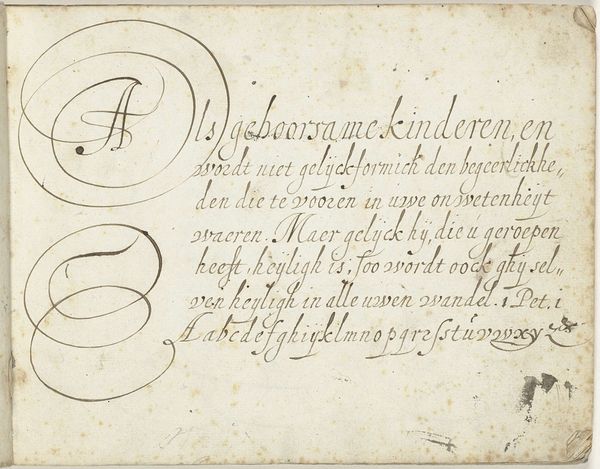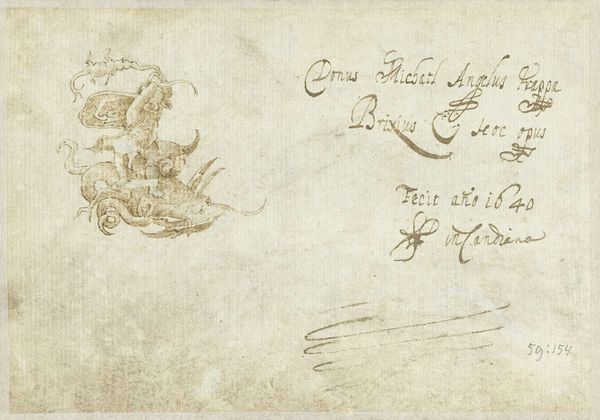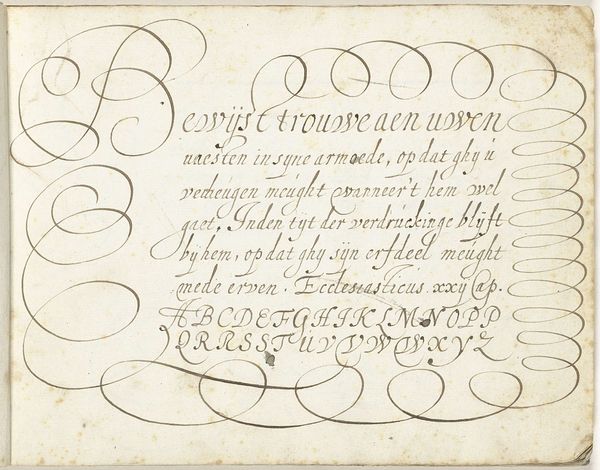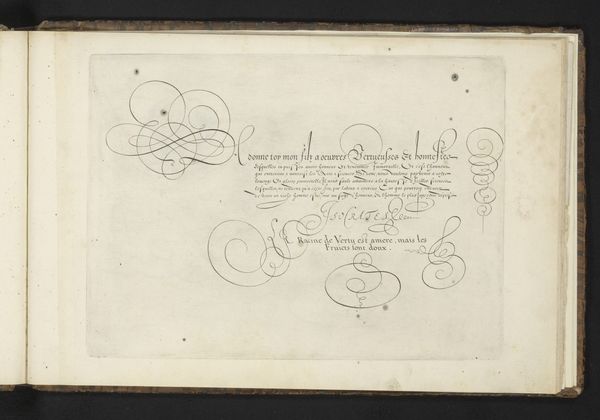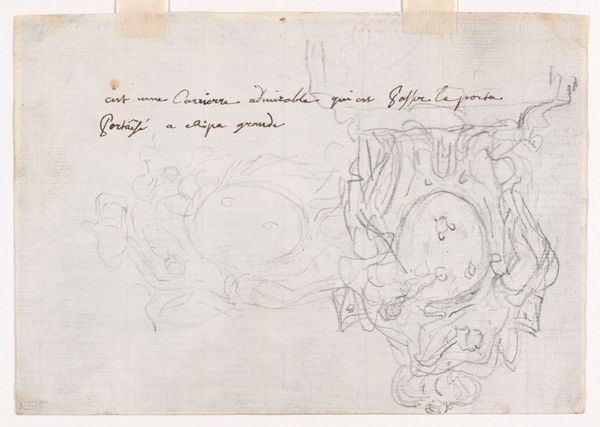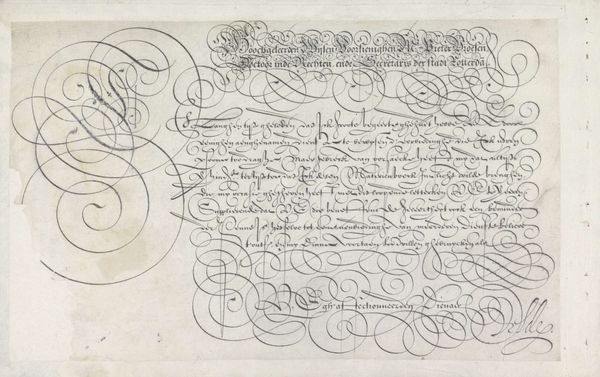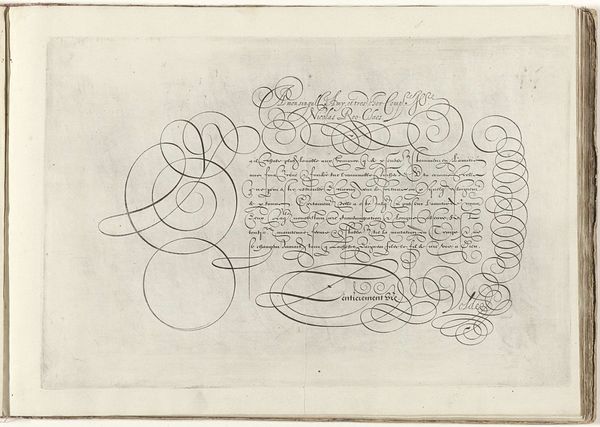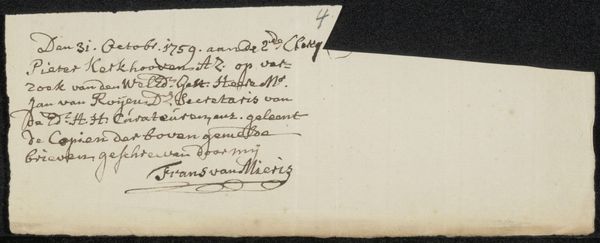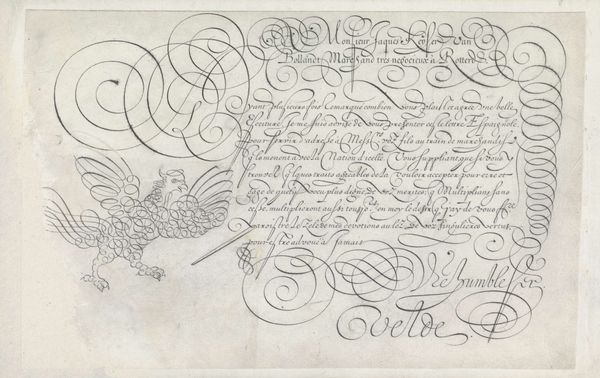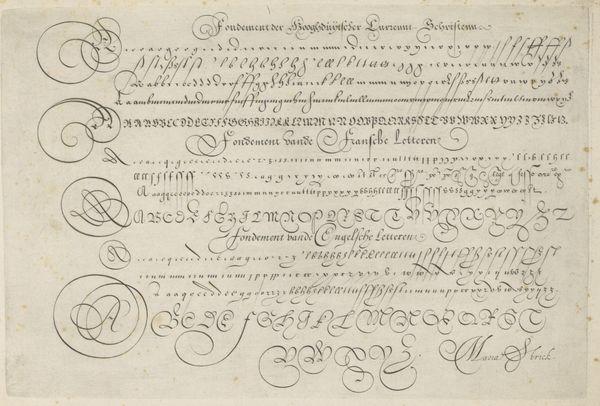
Titel voor tekeningen met scènes uit het leven van Alexander de Grote c. 1655 - 1665
0:00
0:00
drawing, paper, ink, pen
#
drawing
#
comic strip sketch
#
aged paper
#
baroque
#
dutch-golden-age
#
old engraving style
#
hand drawn type
#
paper
#
personal sketchbook
#
ink
#
idea generation sketch
#
journal
#
fading type
#
sketchbook drawing
#
pen
#
sketchbook art
#
calligraphy
Dimensions: height 85 mm, width 156 mm
Copyright: Rijks Museum: Open Domain
Editor: Here we have Leonaert Bramer's "Titel voor tekeningen met scènes uit het leven van Alexander de Grote," created around 1655 to 1665, a drawing using pen and ink on paper, held at the Rijksmuseum. The faded calligraphy gives the piece an antiquated, almost mysterious aura. How would you interpret this work, particularly its visual language? Curator: Well, at its heart, calligraphy serves as more than just writing; it is a symbolic act that blends cultural memory and continuity. Bramer isn't merely labeling a series; he’s invoking the spirit of Alexander through the deliberate, almost reverential strokes of his pen. Consider the flourish; it signals not just a name but a carefully constructed persona for posterity. Does that script strike you as purely informational, or is there something else at play? Editor: I see your point. It's less about legibility and more about evoking a certain historical weight. Like he's channeling Alexander's era through the act of writing. Curator: Precisely! Every loop, every serif carries echoes of power, legacy, and the enduring fascination with great leaders of the past. It speaks to our continuing effort to imprint meaning on existence via symbolism. In addition, do you notice something humorous as well as serious? Editor: I think I can understand better now that each curve represents a choice of artistry rather than simple functionality of text. Thanks, I did not initially consider all this cultural symbolism conveyed by calligraphic art. Curator: Indeed, and appreciating art, at its most elementary form, is simply learning and developing empathy towards new forms and ideas.
Comments
No comments
Be the first to comment and join the conversation on the ultimate creative platform.
